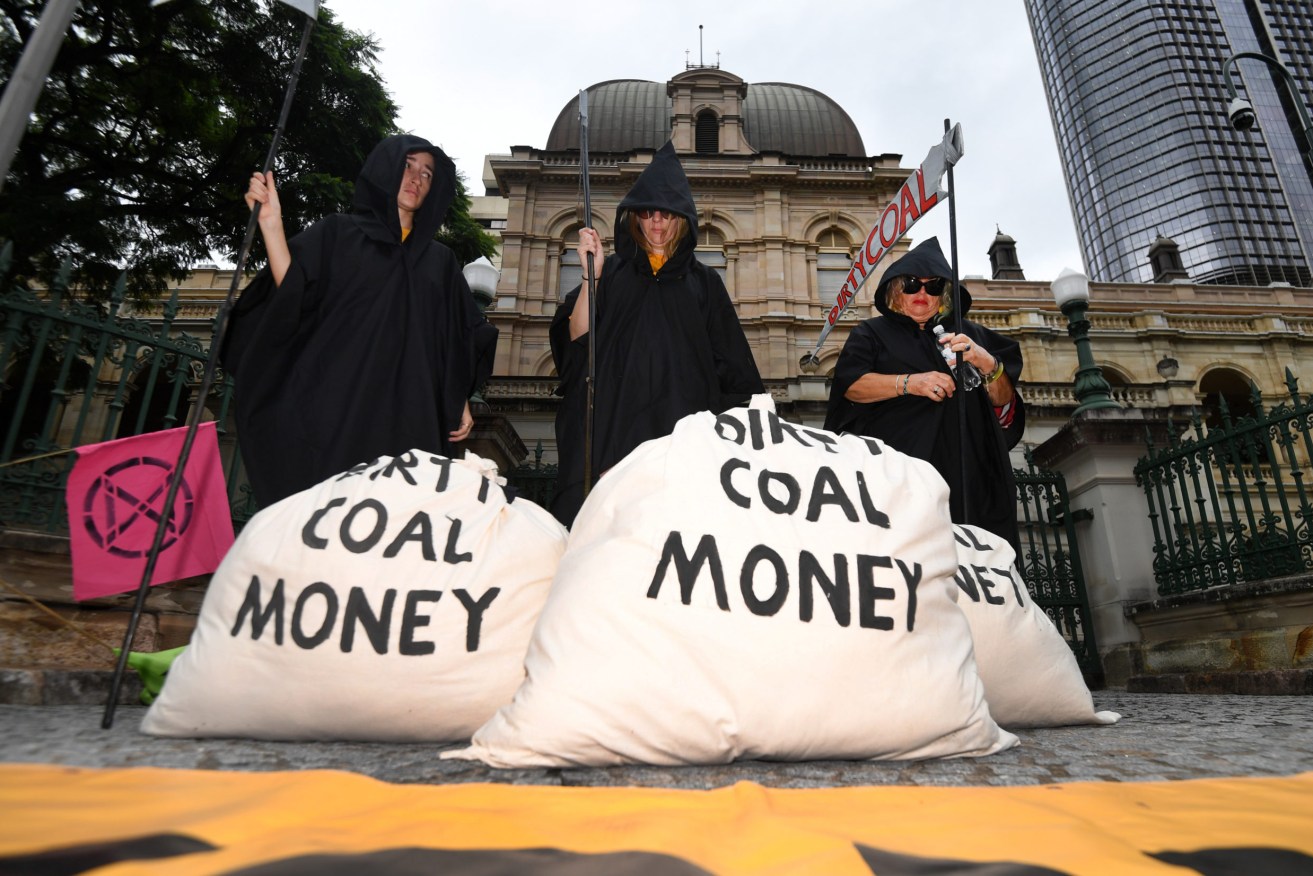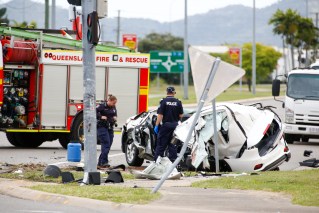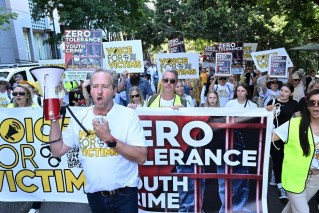Want to shut down a coal-fired power station? It will cost $40m
As Queensland embraces renewables, the Palaszczuk government has revealed it would cost almost $210 million to close down five coal-fired power stations.

Extinction Rebellion protesters demonstrating outside Parliament House last year. (AAP Image/Dan Peled)
The state’s power network was pushed to the brink this week when Callide C power station was damaged by a fire that then triggered other generator shutdowns and blackouts across the state.
Only pumped hydro generation at Wivenhoe Dam kept Queensland from forced load shedding and prolonged outages.
The cause of the fire is still being investigated but it comes as mega batteries are brought online to better manage the shift to renewables, and as climate change protesters continue to rail against the use of coal.
In answer to a question on notice from the Opposition’s Colin Boyce, Energy Minister Mick de Brenni today revealed closing down a coal-fired power station would not come cheap. And that does not take into account the cost of generating replacement power.
Permanently closing Callide C, for example, would cost $36.8 million, while the cost of decommissioning and making good other power stations ranged from $36 million for Kogan Creek to $49.1 million for Stanwell.
Another coal-fired power station at Gladstone is owned by a private consortium so the government did not have a figure for the notional cost of shutting it down.
“If power stations are retired there is a need to properly rehabilitate the sites to ensure environmental performance obligations and community expectations are met,” de Brenni wrote.
“Future costs associated with the rehabilitation of power station sites, close down and restoration of coal mines, and the make good of corporate office space are estimated and provided for by the companies which own the power stations and should not be considered in any way as a representation of preparation for decommissioning.”
The government has a target of having 50 per cent of Queensland’s energy generation coming from renewable sources by 2030 to reduce emissions, address climate change, and diversify the economy.












